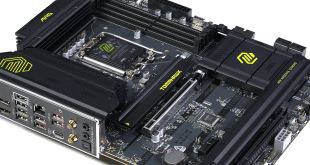To test all CPU coolers, we devised an easily repeatable test with no variables other than the coolers themselves. This ensures that figures from every cooler we test are comparable with each other.
Test rig
For the CPU we are testing with the AMD Ryzen Threadripper 1950X installed in a Gigabyte X399 Aorus Gaming 7 motherboard. For RAM we have a 32GB kit of G skill flare X running at 3200Mhz, and storage is handled by a 120GB Samsung 840 EVO SSD. Powering our bench is a Seasonic Prime Platinum 650W PSU, and just to enable a display output an Nvidia Geforce GTX 980 was also installed.
The test process
For testing, we run a number of tests including 6 separate temperature readings per cooler. We first measure the idle temperature of the 1950X locked in at 3.4GHz before measuring its temperature under load at the same frequency.
For a representation of overclocks, we run the 1950X at 4.5GHz with a core voltage of 1.4V applied both at idle and load. The temperatures we present are temperature deltas, where the ambient temperature of the testing environment is deducted from the temperature taken from the CPU for both idle and load. An idle reading comes from leaving Windows on the desktop for 15 minutes. A load reading comes from running Prime95’s (version 26.6) Small FFTs test for 15 minutes – enough time for temperatures to plateau. We use HWInfo64 v5.82 to measure temperatures.
As the 1950X is suited more for productivity, passes of both Cinebench R15's Single and Multicore benchmarks were run, as well as Blenders BMW CPU benchmark to give a better idea of temperatures during typical use.
Noise output
We measure noise levels with our sound meter positioned 1 foot away from the test bench. The peak noise level is presented. We have measured the noise floor (i.e. ambient noise levels of the room) to be 34 dBa, and when tested at stock clocks, the vast majority of coolers do not emit noise levels above this figure. Thus, we present one chart with noise levels taken during our overclocked CPU test run.
 KitGuru KitGuru.net – Tech News | Hardware News | Hardware Reviews | IOS | Mobile | Gaming | Graphics Cards
KitGuru KitGuru.net – Tech News | Hardware News | Hardware Reviews | IOS | Mobile | Gaming | Graphics Cards


